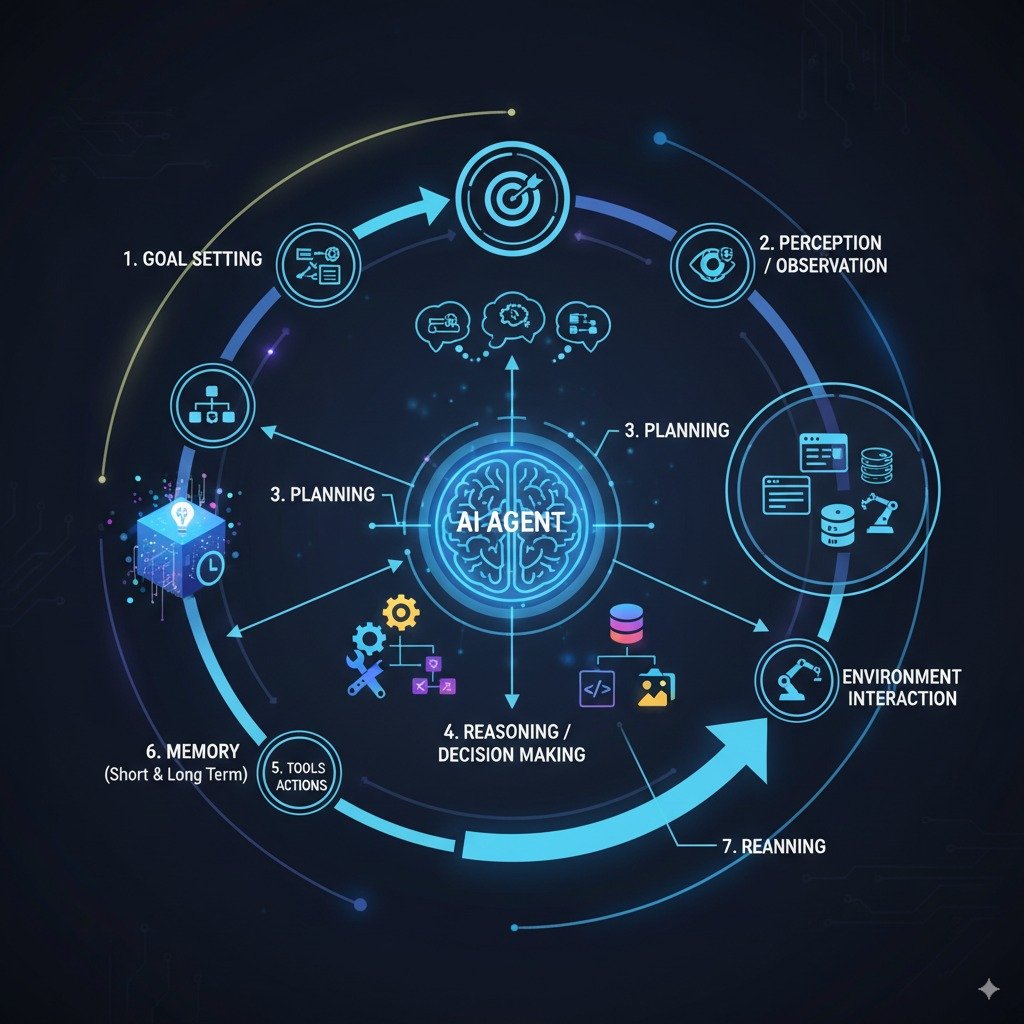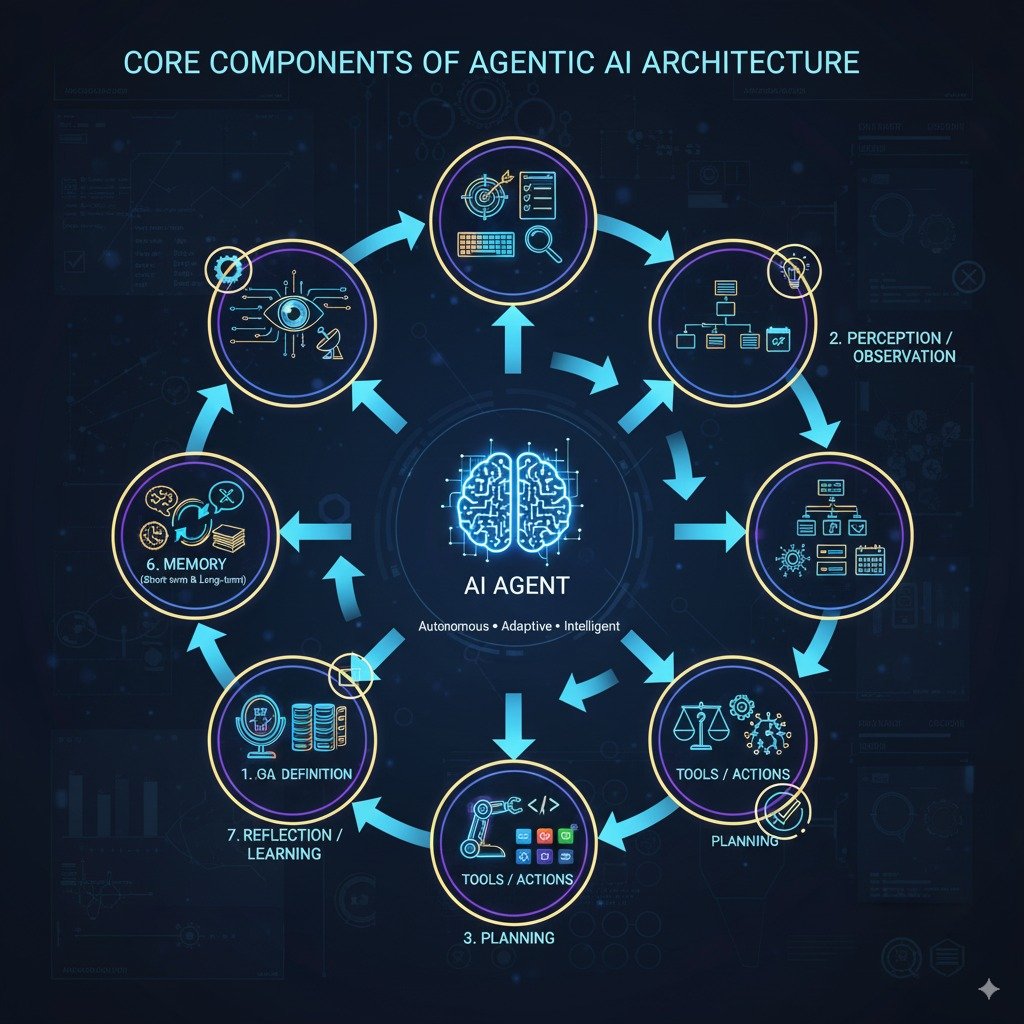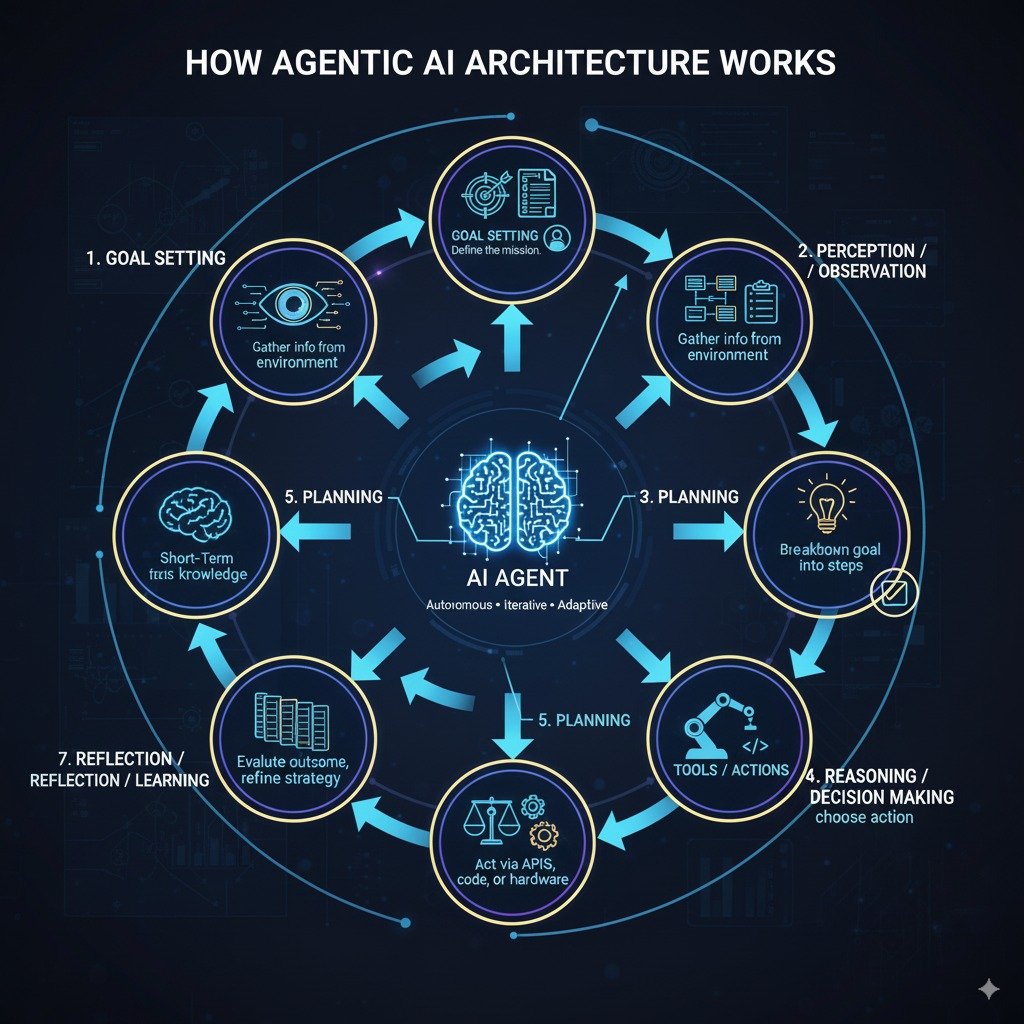Exploring the structural framework that enables artificial intelligence systems to function as autonomous agents

An AI agent capable of autonomous decision-making and action
What is Agentic AI Architecture?
Agentic AI Architecture refers to the structural framework that enables artificial intelligence systems to function as autonomous agents. Unlike traditional AI systems that respond to specific inputs, agentic systems can set their own goals, make decisions, and take actions to achieve objectives without constant human intervention.
This architecture is designed to support the core capabilities that define agentic systems: autonomy, goal-oriented behavior, environmental awareness, and adaptive learning. It integrates various components including perception modules, reasoning engines, decision-making frameworks, and action execution systems.
Core Components of Agentic AI Architecture

The essential components that make up an agentic AI system
Perception Module
The perception module serves as the sensory system of the agentic AI, collecting and processing data from various sources including sensors, IoT devices, data streams, APIs, natural language processing systems, and computer vision technologies.
Reasoning Engine
The reasoning engine is the cognitive core of the architecture, responsible for analyzing perceived information, drawing inferences and conclusions, making predictions about future states, and evaluating potential outcomes of different actions.
Decision-Making Framework
The decision-making framework enables the agent to choose actions based on its reasoning. It includes goal management systems, planning algorithms, utility functions for evaluating options, and ethical and constraint-based decision boundaries.
Action Execution System
The action execution system translates decisions into concrete actions through API integration capabilities, robotic control interfaces, digital workflow automation, and communication protocols for interacting with other systems.
Learning and Adaptation Module
The learning module enables the agent to improve its performance over time through machine learning algorithms, reinforcement learning systems, knowledge acquisition mechanisms, and performance evaluation and feedback loops.
How Agentic AI Architecture Works

The operational cycle of an agentic AI system
Perception
The agent gathers information about its environment through its perception module, collecting data from various sources.
Reasoning
The reasoning engine processes this information to build an understanding of the current state and context.
Decision-Making
Based on its goals and understanding, the agent evaluates possible actions and selects the most appropriate ones.
Action
The agent executes the chosen actions through its action execution system, interacting with the environment.
Learning
The agent observes the outcomes of its actions and updates its knowledge and strategies accordingly.
Benefits of Agentic AI Architecture
Enhanced Autonomy
Agentic AI systems can operate with minimal human supervision, making decisions and taking actions independently. This autonomy enables continuous operation and faster response times.
Improved Adaptability
These systems can adapt to changing environments and new information, maintaining performance even as conditions evolve.
Greater Efficiency
By automating complex decision-making processes, agentic AI can significantly improve operational efficiency and reduce the need for human intervention in routine tasks.
Challenges and Considerations
Complexity
Designing and implementing agentic systems is inherently complex, requiring expertise in multiple AI disciplines and software engineering.
Ethical Considerations
Autonomous decision-making raises important ethical questions about accountability, transparency, and the potential for unintended consequences.
Security Concerns
The autonomous nature of these systems creates new security challenges, including vulnerabilities to manipulation and the potential for harmful actions if safeguards fail.
Future Trends in Agentic AI Architecture
Emerging Developments
The field of agentic AI is rapidly evolving, with several key trends shaping its future:
- Multi-Agent Systems: Future architectures will increasingly focus on systems where multiple agents collaborate to solve complex problems.
- Enhanced Explainability: There is growing emphasis on creating architectures that can explain their decision-making processes in ways humans can understand.
- Human-AI Collaboration: New architectural patterns are emerging to better support collaboration between human operators and AI agents.
- Edge Computing Integration: Agentic AI architectures are increasingly being designed to operate at the edge, reducing latency and enabling real-time decision-making.
- Standardization Efforts: The industry is moving toward standardization of agentic AI components and interfaces.
Interactive Poll
Conclusion
Building the Future with Agentic AI
Agentic AI Architecture represents a fundamental shift in how we design and implement artificial intelligence systems. By enabling autonomous agents that can perceive, reason, decide, and act independently, this architecture opens new possibilities for automation, problem-solving, and human-AI collaboration.
As the technology continues to mature, we can expect to see increasingly sophisticated agentic systems that transform industries and create new opportunities for innovation. However, realizing this potential will require careful attention to ethical considerations, security challenges, and the need for human oversight.
Organizations looking to leverage agentic AI should begin by understanding their specific needs and identifying areas where autonomous agents can deliver the most value. With thoughtful implementation and ongoing refinement, agentic AI architecture has the potential to drive significant advances in how we work, live, and interact with technology.